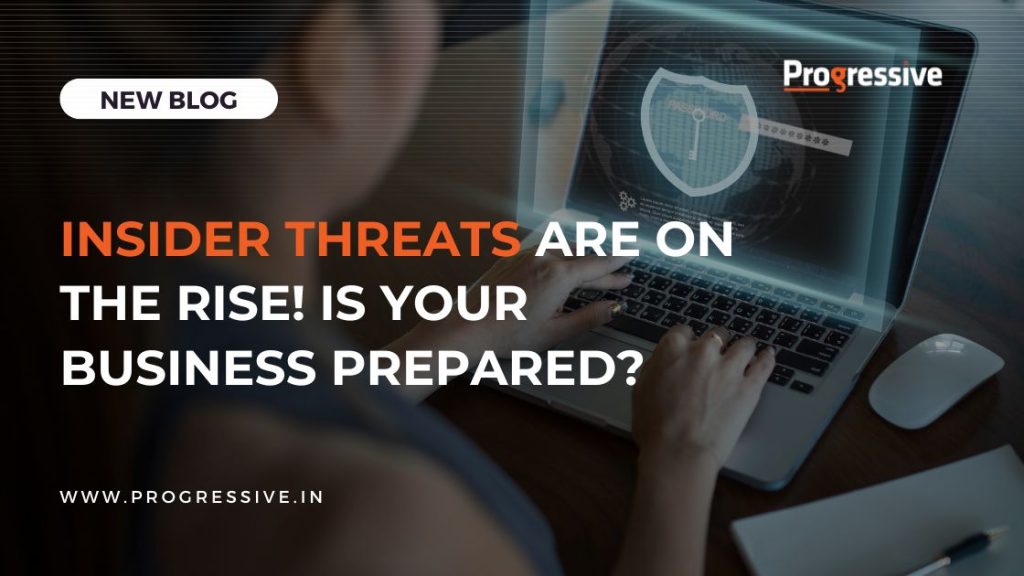
The rise of remote work has increased the risk of insider threats for businesses of all sizes. It is critical to have effective cybersecurity measures in place. It is highly important for organizations to recognize the risks that may arise internally within their own operations. Businesses need to prioritize employee involvement as a partnership in their efforts and empower their strategy with cyber security services that can identify and alleviate insider risks in any potential areas.
Consider these insider threats statistics:
- With over 300 million individuals working remotely and handling data from different locations, businesses are exposed to potential data breaches from insider threats or unintentional mistakes, which can incur an average cost of $7.5 million per year. – Harvard Business Review
- The year 2021 witnessed a 72% surge in insider threat incidents, with 75% of them carried out by employees working remotely. – Spiceworks
- According to Gurucul’s 2023 Insider Threat Report, 74% of organizations say insider attacks have become more frequent.
What are the Types of Insider Threats in Cyber Security?
It’s High Time for Insider Threat Awareness
1. Unaware Employees
One of the most common types of insider threats is an employee who is not familiar with cybersecurity best practices. Such employees may be unaware of the risks associated with their actions and the impact they can have on the organization’s security. They may unintentionally leak sensitive data, click on malicious links, or fall for scams.
2. Careless Employees
Another type of insider threat is a careless employee who doesn’t follow security practices and falls victim to phishing scams. These employees may open suspicious emails or click on links that install malware on their systems. As a result, attackers can gain access to sensitive data and systems, which can cause severe damage to the organization.
3. Employees with Malicious Intentions
A malicious insider threat occurs when an employee intentionally steals sensitive data or compromises the organization’s systems. These employees may use their privileged access to gain unauthorized access to confidential information, delete data, or plant malware on systems.
4. Disgruntled Employee
These employees may seek to disrupt business operations seeking personal gain, such as revenge or financial gains. They may use their knowledge and access to sabotage systems, delete data, or steal confidential information. A disgruntled employee can also be an ex-employee who still possesses access to sensitive data, information, and systems.
5. Unreliable Third Parties
Unreliable third-party vendors and their workflows can also pose a significant insider threat to organizations. These entities and/or their personnel may be negligent in their security practices, use outdated technologies, or have a history of data breaches. They may have access to sensitive data and systems, which can put your organization at risk.
How to Detect Potential Insider Security Threats?
Check out these Insider Threats Indicators:
- Employees who log in during unusual hours or outside of their regular work schedule may be an indication of an insider threat. This could be a sign that the employee is attempting to access data or systems with an intention to hide their activities as they’re not assigned anything during that time.
- If an employee is accessing data or systems that are not related to their job duties or responsibilities, this could possibly be a potential threat. The employee might be attempting to steal sensitive information or compromise the organization’s security.
- Employees who are downloading unusually large amounts of data may be attempting to steal sensitive information. This should be investigated further to verify.
- An employee is copying data into their personal devices or drives. it indicates that the employee is attempting to steal confidential information and take it outside the organization.
- If an employee is creating unauthorized accounts, it may be an indication that the employee is attempting to gain unauthorized access to sensitive data or systems. Organizations should monitor account creation activity to detect any suspicious behaviour.
How to Prevent Insider Threats and Reduce Risks?
Best Practices for Insider Threats Detection:
To protect your business against insider threats, it’s essential to conduct third-party assessments to identify potential vulnerabilities and areas for improvement. This can include conducting regular security audits, implementing access controls, and monitoring employee activity.
Maintaining a strong culture of cyber hygiene throughout the organization can help reduce the risk of insider threats. This can include educating employees on best practices for data security, enforcing password policies, and using multi-factor authentication.
User and Entity Behaviour Analytics (UEBA) is a powerful solution that can help detect and reduce insider cyber threats. UEBA uses machine learning algorithms to analyse user behaviour and identify anomalous activity that may indicate a potential insider threat. By monitoring user activity across multiple systems and devices, UEBA can provide early warning of potential threats. This helps security teams take proactive steps to mitigate them.
Outsourcing cybersecurity services can be a cost-effective way to protect your business against insider threats. By working with a trusted managed security partner, you can leverage their expertise and experience to identify potential vulnerabilities, implement best practices, and monitor user activity for potential threats. Additionally, outsourcing can provide access to specialized technologies as well as capabilities that may not be available in-house. This includes UEBA solutions, threat intelligence feeds, and 24/7 monitoring and response capabilities.
Get Progressive’s Managed Security Services to Mitigate Insider Threats
Progressive Infotech is a trusted managed security services provider that can help businesses detect insider threats with ease. By leveraging User and Entity Behaviour Analytics solution and cutting-edge monitoring technologies, our team of cybersecurity experts can provide 24/7 SOC-driven services and response capabilities, identify potential vulnerabilities, and implement best practices to reduce the risk of insider threats. Don’t let insider threats impact your business – contact us today.